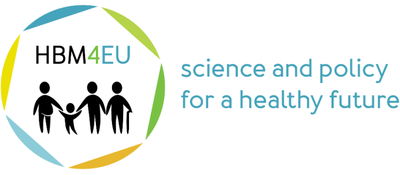
A major hurdle to the reliable risk assessment and management of chemicals is the lack of harmonised information at European level concerning the exposure of citizens, including workers, to chemicals and their interplay with other concurrent environmental exposures and impact on health. Individuals are exposed to a complex mixture of chemicals in their daily lives through the environment, products, food and drinking water and at work. For many chemicals, the health impacts over a lifetime associated with exposure remain unknown. In addition, understanding of the health impacts of exposure to mixtures of chemicals is limited.
Human biomonitoring allows us to measure our exposure to chemicals by measuring either the substances themselves, their metabolites or markers of subsequent health effects in body fluids or tissues. Information on human exposure can then be linked to data on sources and epidemiological surveys, in order to inform research on the exposure-response relationships in humans.
With the objective of addressing knowledge gaps and promoting innovative approaches, The European Human Biomonitoring Initiative, HBM4EU, has been launched in 2017. HBM4EU is a joint effort of 28 countries, the European Environment Agency and the European Commission, co-funded under Horizon 2020.
The main aim of the initiative is to coordinate and advance human biomonitoring in Europe. HBM4EU will provide better evidence of the actual exposure of citizens to chemicals and the possible health effects to support policy making.
Objectives of HBM4EU
The HBM4EU initiative represents a novel collaboration between scientists and chemical risk assessors and risk managers, including several Commission services, EU agencies and national representatives. The project will build bridges between the research and policy worlds and deliver benefits to society in terms of enhanced chemical safety.
Our research will explore current questions in chemical risk assessment and management and will deliver answers that help policy makers to protect human health. Policy makers, stakeholders and scientists will together shape the strategic direction of HBM4EU activities. This transparent and collaborative approach will ensure that our research generates knowledge that addresses genuine societal concerns.
Key project objectives are:
- Harmonizing procedures for human biomonitoring across the 28 participating countries, to provide policy makers with comparable data on human internal exposure to chemicals and mixtures of chemicals at EU level;
- Linking data on internal exposure to chemicals to aggregate external exposure and identifying exposure pathways and upstream sources;
- Generating scientific evidence on the causal links between human exposure to chemicals and health outcomes;
- Providing the most relevant tools to detect emerging chemicals and to identify the chemical mixtures of highest concern;
- Adapting chemical risk assessment methodologies to use human biomonitoring data and account for the contribution of multiple external exposure pathways to the total chemical body burden;
- Feeding information on exposure pathways into the design of targeted policy measures to reduce exposure.
In order to achieve these objectives, the consortium has worked on harmonizing human biomonitoring initiatives in 28 countries, by drawing on existing expertise and building new capacities. National Hubs are established in each country to coordinate activities, so creating a robust Human Biomonitoring Platform at pan-European level.
HBM4EU will run from 2017 to 2021, with the long-term objective of establishing a sustained programme. In developing priorities for HBM4EU the consortium conducted two prioritisation exercises to identify those substances to be the focus of activities.
The first year was mainly dedicated to collecting and collating existing Human Biomonitoring data for the nine prioritized substance groups, making data available, as appropriate, via the Information Platform for Chemical Monitoring, and determining which current policy questions can be answered using existing data. This will allow us to evaluate the extent to which a solid database of comparable Human Biomonitoring data from across the EU can be subject to systematic analysis, so providing answers to key policy questions. The second year was dedicated to identifying the second list of HBM4EU priority substances. You can find a more detailed description of the HBM4EU priority substances and the prioritisation strategy through the SUBSTANCES WEBPAGES.

Document Actions
Share with others